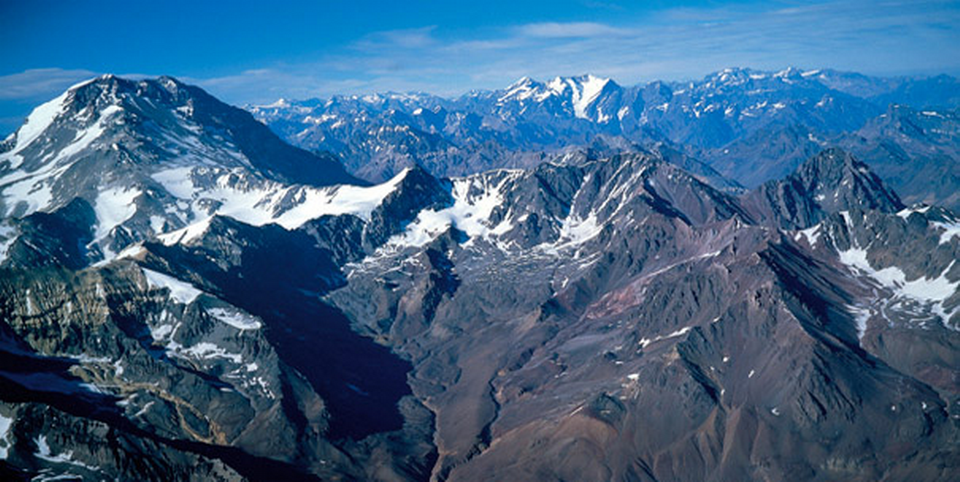.
The New Moon above Calgary tonight with glowing Earthshine ~ Magical
Mystical #Earthshine #NewMoon #yyc #Canada: image via Joy Daniels
@JoyousBounce11, 22 January 2015
cold old tired early late
bright new moon above the bay
cradling to its bosom its heavy sorrow
laden mars violet childhood one
more time

The Parkes radio telescope in western New South Wales, where the fast radio burst was detected: photo by CSIRO, ATNF/AAP via The Guardian, 21 January 2015
Fast radio bursts (FRBs) are one of the
most tantalizing mysteries of the radio sky; their progenitors and
origins remain
unknown and until now no rapid multiwavelength
follow-up of an FRB has been possible. New instrumentation has decreased
the
time between observation and discovery from years
to seconds, and enables polarimetry to be performed on FRBs for the
first
time. We have discovered an FRB (FRB 140514) in
real-time on 2014 May 14 at 17:14:11.06 UTC at the Parkes radio
telescope
and triggered follow-up at other wavelengths within
hours of the event.
from A real-time fast radio burst: polarization detection and multiwavelength follow-up (Abstract): E. Petroff et al., Monthly Notices of the Royal Astronomical Society, Volume 447, Issue 1

CSIRO cuts are front-page news in Parkes. Photograph: Julian Chung/Guardian Australia via The Guardian, 2 July 2014
The pinhole is narrowing, but it's not quite dark yet...
Detach into Future self, clarity and illumination by breaking free of past life identities #newmoon: image via Slater Bradley @slaterbradley, 20 January 2015
A fleeting but immensely powerful celestial signal has been “heard” live for the first time, radio astronomers in Australia have announced, bringing scientists a step closer to discovering its mysterious origins.
“Fast radio bursts” last only milliseconds but produce more energy in that time than the sun does in 24 hours. Their source has baffled astronomers since 2007, when researchers first detected “a bright millisecond radio burst of extragalactic origin” buried in a 90-hour pulsar survey taken at the Parkes observatory in western New South Wales.
Since then just seven more bursts have been identified, but only ever picked up weeks after the signal was received. Last May, for the first time, astronomers caught a live one.
“It was chaos,” said Emily Petroff, the Swinburne University PhD student leading the project that detected the burst.
An email alert went out 10 seconds after the discovery. Telescopes in California, the Canary Islands, Chile, Germany, Hawaii and India scrambled to point their receivers at the same patch of sky where the signal was heard. Astronomers quickly made optical, infrared, ultraviolet and x-ray observations of its traces.
News of the discovery was published on Tuesday in the Monthly Notices of the Royal Astronomical Society.

Neil Armstrong’s moonwalk was beamed from the Parkes radio
telescope in rural NSW: photo by Julian Chung/Guardian Australia via
The Guardian, 2 July 2014
Around 10,000 fast radio bursts are thought reach our galaxy each day, but telescopes can only survey a small patch. “We’re very rarely pointing in the right direction at the right time,” Petroff said. “Every once in a while we just get super lucky.”
At the very least, this latest detection gives fast radio burst hunters some clues about where to look. “We’ve set the trap. Now we just have to wait for another burst to fall into it.”
Petroff said the radio signals “essentially encode information in them of all the things they’ve pass through between their emitter and our telescope”. That means figuring out the trajectory of the signal and its exact age might yield answers to even deeper questions: about the matter that exists between galaxies, even the weight of the universe itself.
That work is threatened by an earthly source: science funding cuts by Australia’s federal government have hit the Parkes observatory hard. The dish that helped broadcast the 1969 moon landing could shut within two years “without substantial, long-term external investment,” senior astronomers have warned.
“As it stands, in the field of fast radio bursts, Parkes is by far the world leader,” Petroff said. If it did close, “it would be very difficult to keep operating on the same level”.
Dying star could be behind immensely powerful radio bursts 'heard' live: Astronomers may be one step closer to discovering origins of mysterious signals after detecting the millisecond-long blip live for the first time: Michael Safi, The Guardian, 21 January 2015

Jobs could be on the line at 'the dish' as the CSIRO faces budget cuts: photo by CSIRO/AAP Image via The Guardian, 2 July 2014
Super Moon in Aquarius Tonight - January 20th 2015: image via Evolve and Ascend @evolveandascend, 20 January 2015 Asbury Park, New Jersey
The everyday reality of #climatechange: image via 350 dot org @350, 20 January 2015
#Climatechange boosting risks of conflict in fragile states - report: image via King Stevens @zypyxx,14 January 2015
#ClimateChange is laying waste to #water supplies, warns @FarmBureau: image via Jason Lamarche @Lamarche, 14 January 2014
#Canada won’t commit to meet #USA methane cuts #oilandgas # #climatechange #regulation #cdnpoli: image via WestCoastNativeNews @WCnativenews, 14 January 2015
The world’s largest polluters are being subsidized by your governments. #climatechange: image via Ben and Jerry's @benandjerrys, 14 January 2015
Leave #fossilfuels buried to prevent #climatechange Do you agree?: image via RelayBlue @Relay_Blue 14 January 2015
I am a floating force of life, waiting to be honored by....you. Time is running out. @Extinction_OPS @#climatechange: image via The Earth @myearthfriend, 14 January 2015
Dark Snow Doesn't Bode Well For North America #environment #climatechange: image via Reg Saddler @zaibatsu, 16 January 2015
Study quantifies huge amount of runoff from Greenland's snow-melt rivers #climatechange: image via Bob Berwyn, 14 January 2015
Meltwater in Greenland Ice Sheet Hastened - #climatechange image via start your acc here @xencasartup, 22 January 2015
Two sub-glacial lakes have drained in Greenland raising concern abt #climatechange + ice sheet: image via As It Happens @cbcasithappens, 22 January 2015
Oceans rising far faster than in the past, says new study @TorontoStar #climatechange #cdnpoli: image via As It Happens @cbcasithappens, 14 January 2015
Researchers worry that #climatechange will accelerate melting of Andes #Glaciers #cdnpoli: image via Blue Channel @bluechannel24, 22 January 2014
Oka Road entry to the percolation ponds #climatechange: image via #ClimateAction @EcoWarrior1980, 22 January 2014
Dry percolation ponds off Los Gatos Creek at Dell Ave #climatechange: image via #ClimateAction @EcoWarrior1980, 22 January 2014

Will we burn all the fossil fuels we have in order to meet the world’s demand for energy, even if it results in climate chaos?: photo by Murdo Macleod/Murdo Macleod via The Guardian, 22 January 2015

Jilin, China. Smog along the banks of the Songhua river as temperatures reach minus 14C. The air quality index in north China’s Jilin province has risen to 260, indicating high pollution: photo by ChinaFotoPress via the Guardian, 22 January 2015

In Bangladesh, a woman searches the riverside in Dhaka for any plastic she can sell for recycling. Around a third of the city’s 15 million residents live in poverty: photo by Munir Uz Zaman/AFP via the Guardian, 13 December 2014

An aerial view taken from an Indian Air Force's helicopter shows a flooded Srinagar city. Anger mounted over what many survivors said was a bungled operation to help those caught in the region's worst flooding in 50 years: photo by Adnan Abidi/Reuters via the Guardian, 13 September 2014

A Filipino man carries a plastic sheet from his house after strong waves caused by typhoon Hagupit battered a coastal village in Legazpi. Residents began trickling back to their homes when local authorities reported the typhoon had passed. Nearly 900,000 people had moved out of their homes into shelters: photo by Aaron Favila/AP via the Guardian, 13 December 2014

A solitary figure watches the strong waves lashing a coastal village: photo by Francis R. Malasig/EPA via the Guardian, 6 December 2014.

A resident does what he can to secure the roof of his shanty home in Tacloban city: photo by Francis R. Malasig/EPA via the Guardian, 6 December 2014

Waves crash into houses along the coast: photo by Aaron Favila/AP via the Guardian, 6 December 2014

A man reacts as strong winds and rain from Typhoon Hagupit hit the shore in Legazpi: photo by Aaron Favila/AP via the Guardian, 6 December 2014

Residents wade through floodwater in Borongan city: photo by Francis R. Malasig/EPA via the Guardian, 6 December 2014

Motorists make their way through fallen trees in the town of Taft, Samar island: photo by Francis R. Malasig/EPA via the Guardian, 6 December 2014

A Qantas Airways Boeing 737-800 flies through storm clouds above Sydney after the Australian Bureau of Meteorology issued a severe thunderstorm warning: photo by David Gray/Reuters via the Guardian, 13 December 2015





















10 comments:
Jimmy Lafave: Not Dark Yet
Severa Gjurin: Not Dark Yet
Bob Dylan: Not Dark Yet (1997)
Beautiful Clark, heartbreaking Dylan. And in between, a pretty good sample of everything that matters. Not bad for some words, a tune, and a few photos.
Exemplary post, Tom; really hit the spot. .
Thanks for the music, Tom. I was going to send you Van morrison's Moondance but: 1) doesn't fit the mood here and 2) youtube doesn't work in the land of the pure.
Best,
b.
Thanks, friends, for stopping in at this small and doubtless redundant ritual obsequy.
At this stage it's move about a bit or die for me, so every conscious day or night I try, once the insane traffic on the freeway feeder ebbs to a mere deafening roar after rush hour, to hobble down the broken steps and proceed very slowly to a point where it's possible to see out past the urban sprawl, with its continuous glare of artificial illumination, as far as the brightly lit bridges, and Alcatraz, and the Marin Headlands, and the great ocean beyond. Above Golden Gate Fields (the racetrack), on an unclouded evening, the moon rises over the darkly luminous Bay. Watching it is an experience of splendour, an instant meditation without subject or object.
But ah, as Barry says, all that stuff in between -- aye there's the rub.
What's Not Dead Yet should probably consider itself lucky.
I think it's silly to even begin to talk about "climate change" being a "problem" -- and then, having cleared one's conscience, to jump back in the car on another foolish errand.
It's the technologies drive the people, not tother way round. Right off the cliff, as may be.
Here in California, those things Obama calls "folks", would, I believe, write off Earth in a nanosecond, if it ever came down to a choice between Earth and their car. And their other car(s), for that matter. Oh, and of course they'll be wanting to keep their smartphones as well. Those will help, on the plummet into Nothingness.
Heard a "scientist" on the Beeb last night explaining that it's now within the range of possibility to attempt a genome sequencing of the universe.
"Of course," said he, "it would take a lot of power to run the numbers. About a million gallons of petrol per second. So it's probably not yet feasible."
I loved the "yet".
With a bit of a boost in funding, perhaps Science could remove all the remaining fossil carbon from the planet, set fire to it, and learn, for the duration of a nanosecond, to "actualize" more of the same Nothing that this species has been running on for the past few hundred years.
One supposes the few years left will provide ample field of study for Science, Science can jump in its cars to work and play and drop off its kids at carefully supervised "soccer" practise and then pick them up again, and hop aboard its planes to have its conferences, then back to the office, run some more numbers, accept some more funding, then drive back home again to the secured cube to feel protected, surrounded by the enveloping Deadness of Nothing.
Therefore it struck me that, in anticipation of what's to come, we might henceforth drop out all the great marketing holidays -- Super Bowl's next, I believe -- and replace them with serial remembrances of that dying star which is pulsing its last sporadic gasps, in the form of radio waves. Somehow I suspect we are not on its mind, if it has one. But that doesn't mean it's not on ours, or that something in the way of a twinning ceremony might not nonetheless be in order. Like Birmingham with Fallujah, say, New York with Tokyo, that sort of thing.
The moon over the water is often the best part of my day, too. And it's so strange to think of that far off star, as real as you or me, not waving but drowning.
Nora,
That struck me, too.
Not that dwarfish we would rate highly enough in the estimation of a formidable dying star to earn its attention... but I spent a bit of time on the thought (?) that we, and that dying star, might be considered, from, of course, our own perfectly subjective view, "twinned" -- as they do with cities, you know.
Talking of water, you'll be lucky to be right there on it, when the waters rise...
And by the by have you been noticing any sticky stuff in the water over there on your side of the Bay, I wonder?
Mystery Goo: Mercy, Mercy Me
The herring are spawning right now, so there's a bit of that stuff of life slicking the water. Other than that, I haven't noticed anything unusual -- though with these short days, it's usually dark by the time I get home. There's probably all sorts of sticky stuff I miss.
I hope we don't see any of that gray goo. The birds are among my favorite neighbors.
There was a slither of a moon here too.
That first line: the steady, lonely pace of it and "early late" putting time out of joint.
Just wanted to offer another terrific sliver of a moon poem, by Buson, to go with that first photo:
Such a moon -
the thief
pauses to sing.
trans. Stryk and Ikemoto
Duncan,
Now I've been taxed with incipient minimalism, I hardly know how to continue to elevate my geriatric poverty of means to the status of mere compression, possibly even modesty, at last.
In any case, curiously, it is now very early here, and at the same time awfully late, and in that fact the whole aching tale may be encapsulated, or perhaps not.
Mars Violet was a kind of faith for me in my painting days. Two or three hundred thin washes of Mars violet, I never minded, always loved the results sometimes, at any rate harming nobody.
When seeing sunsets I never fail to attempt colour charting.
Turner with his sunrises, and his colours -- that element in the Mike Leigh film I loved.
Barry, thanks for the exquisite Buson -- and in exchange:
Buson: Winter Rain
"...shows what is before our eyes/as though it were long ago"
Post a Comment